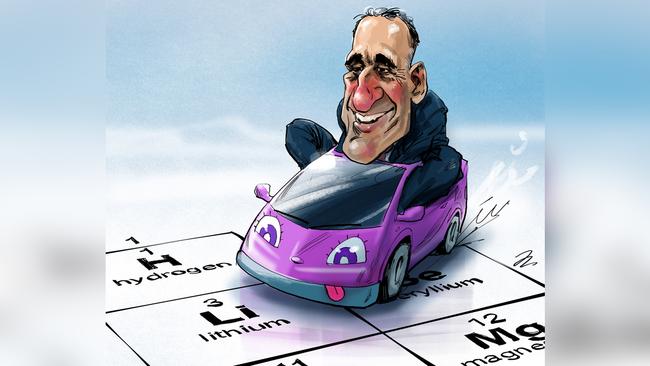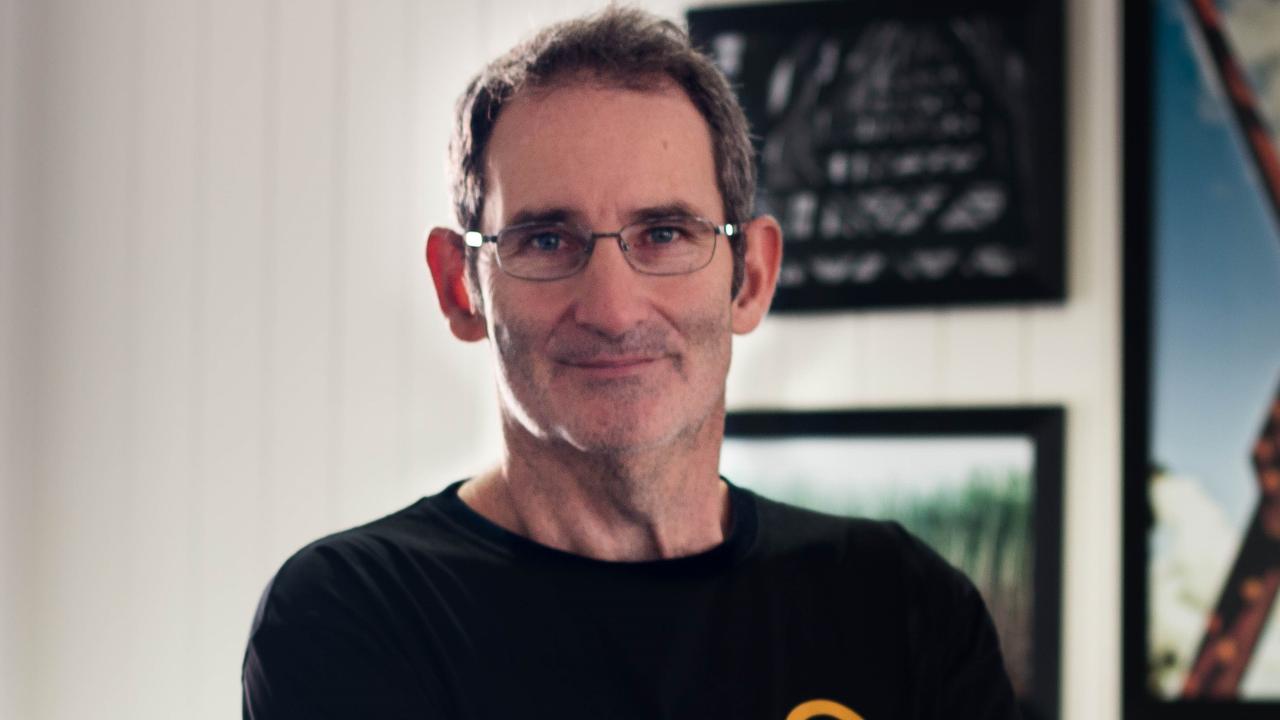‘Dog catcher’ Rob Scott chases lithium role for Wesfarmers
CSBP’s old boss Rob Scott has put the chemical division front and centre.

CSBP was the forgotten child at Wesfarmers, but now its old boss Rob Scott has put the chemical division front and centre with the $776 million bid for lithium producer Kidman Resources.
The division was the company’s first takeover target in 1977 and the $60m hostile deal at the time was Australia’s biggest, but in the past decade all the focus at Wesfarmers has been on retail.
That scenario is in part public relations spin, because CSBP is largely a gas-based ammonia producer and we are talking about a different process here leveraging a smaller team at the company.
The upside is that if Wesfarmers is successful, it will team up with the world’s second-biggest lithium producer, SQM.
The Chilean company knows what it is doing even if Wesfarmers is learning, but it’s the concept that appeals and a step into the new climate conscious world of electric cars.
Scott confided on Thursday that he would like some more financial metrics around the ALP carbon plans so everyone knows where they stand. The cash cow remains the Bunnings chain, which accounts for 27 per cent of group capital at $3.1 billion, where it returns a stunning 47 per cent.
CSBP at $1.3bn accounts for 11 per cent of group capital, and returns are not too shabby at 29.4 per cent. Its boss, Ian Hansen, is a 30-year veteran who now takes centre stage as Scott attempts to build a new manufacturing base using chemical division knowledge to process the basic lithium ore converted into spodumene, which is turned into lithium hydroxide — the new wonder product for electric-car batteries.
Hansen’s folk will also come to the party if the earlier bid for rare-earths miner Lynas gets past the cloak-and-daggers stage.
While the naysayers called Scott the dog catcher because of the collection of sometime poor-performing assets under his industrial division, he was quietly working with them to develop new ways to use the chemical expertise.
The combined $2bn play (including a $600m plant revamp) is not without risks given Kidman makes no money and the first product won’t hit the wharves until 2025, which is long after most of the aged retail analysts who cover the stock will be working.
Not surprisingly, they questioned the deal on financial grounds when a new Bunnings can generate Alice in Wonderland-type returns, and this one is a long-term play.
There are also the perennial commodity market fears that lithium demand may be overblown and there could be a massive global oversupply led by China.
Scott has his own plans to leverage the 20 times upside in value-added processing, which would create a new industry for the country in partnership with SQM. This and plans to process the rare metals from Lynas is just the sort of value-added processing the country needs and, while it’s a few years before he can bank the proceeds, the dog catcher will have plenty of local politicians cheering him on.
Wesfarmers is being advised by UBS and Kidman by Greenhill.
Word on research
US companies account for 57 per cent of US spending on research and development, but in Australia it’s just 34 per cent.
The good news is this means the universities and others are filling the slack, but the Deloitte figures show corporate Australia has some heavy lifting to do if it wants to remain competitive.
Deloitte’s global strategy chief John Meacock is in town to spread the word and the Australian native said in an interview that perhaps Australia’s record 27 years of growth had made companies too conservative.
Asia is high on his to-do list, saying everyone talks about the region, but the key is to shift from a trading relationship to building business.
Ironically he is not the only one to raise this issue, with no one in business calling a recession, but noting there is a new generation in the workforce who have never lived through a prolonged downturn.
Deloitte regards itself as a professional service firm with just 13.5 per cent of Australian revenues earned from traditional audit work. Instead, Meacock says the firm has extended and developed its strength to partner with clients to help them transform their business. Deloitte itself has partnered with companies such as McLaren to tap its expertise on a range of issues — including, of course, using data.
He has noted that compared with his new home there is more discussion about policy in Australia, and while President Donald Trump has divided the US he has been positive for business, with the past four years seeing less regulation, with red tape now at just one-third of European levels.
Companies, he said, now understood they had to be profitable but for a purpose that includes making a social contribution and the key was to get the balance right.
Artificial intelligence, he argues, is the wrong term because machines and people working together is very real and instead we should talk about augmented intelligence.
Banks roll on
NAB, AMP and IOOF were the big losers from the royal commission, but acting NAB boss Phil Chronican on Thursday delivered a solid $2.9bn profit for the bank, with a slight increase in revenue and good cost control and with its three-year transformation strategy on track.
The good news from this and the ANZ result is that, appalling customer management aside, the banking oligopoly has managed to roll along, generating in NAB’s case a hefty 11.7 per cent return on equity.
Myriad challenges lay ahead, including a slowing economy, regulators in overdrive and New Zealand plans to lift capital levels — which on present indications would result in a massive change at NAB given some $30bn in loans may turn uneconomical and/or an extra $5bn in capital is required.
NAB executives past and present, excluding former boss Andrew Thorburn, have 1.6 million shares potentially owing at the end of last year, worth about $40m at $25 a share.
Thursday incoming chair Chronican said that, as an interim measure, this would be chopped by $5.5m or about 220,000 shares, as a result of the myriad snafus at the bank.
They will have enough to pay the rent but as a sign of goodwill — or, more to the point, accountability — it was a good step ahead of the company revamp of its pay structure.
Existing directors will take a 20 per cent cut on their second half stipend, which means the average non-executive director will drop $23,000 and outgoing chair Ken Henry about $79,000 leaving him with just $711,000.
De Ferrari’s rev-up
New AMP boss Francesco De Ferrari has impressed some of the naysayers noting his remarks at Thursday’s annual meeting about corporate culture.
He confided that employees should ask themselves, if this was their business, would they make the same decisions? Would they buy the products and services? Would they spend their own money?
The issue still worrying some shareholders is the $3.3bn sale of the insurance company to UK-based Resolution Life.
AMP to most was an insurance company, so what is it now, and at what price and at what point in the cycle did the board commit to sell the crown jewels?
De Ferrari’s biggest problem is stemming the flood of money walking from its wealth business, with $5.5bn flowing from the fund manager in the past 12 months, leaving a still sizeable $129.3bn.
But the last year should have seen an increase in funds under management in a rising market, underlying the damage caused by last year’s royal commission.
The 13 per cent vote against chair David Murray was sizeable.



